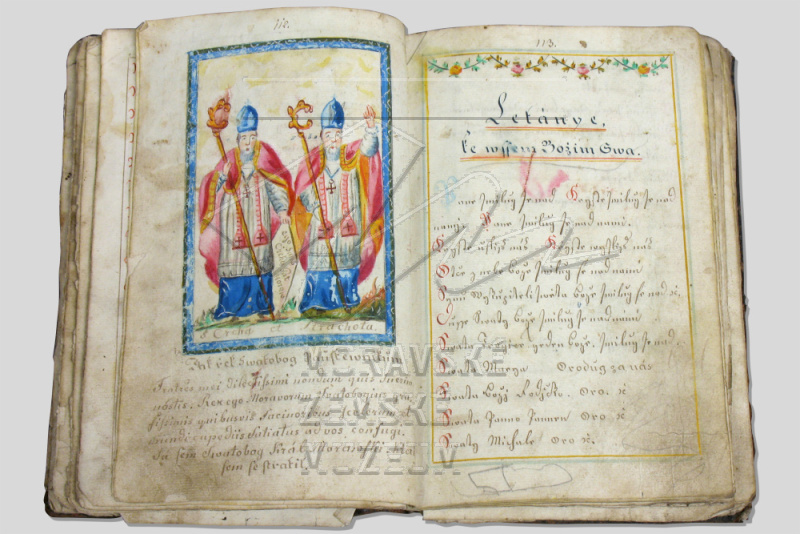Motive of Crha and Strachota (Cyril and Methodius)

Hand written and illustrated prayers belonged to important evidences of folk art from the second half of the 18th to the first half of the 19th century. In spite of the expansion of printed production their collection were frequently used because hand written texts were more personal and more solemn. They came mostly from the hands of anonymous authors – teachers, clerks, folk scholars and other talented persons who made some extra money in this way.
The authors worked on order of their relatives or acquaintances that used prayer books and hymnals as present or reminder of important family or live events (e.g. baptism, wedding). The names of the possessors of those manuscripts were often written on the inside board or on the first page.
The name of the original holder Jan Hanzl appears also in the remarkable collection of hand written prayers and religious songs kept in the holdings of the Ethnographic Institute / Moravian Museum; the above mentioned collection came into being probably around 1820 in Moravian environment. Among charming representations of beloved saints we can find also St. Cyril and Methodius appearing under Old Czech names Crha and Strachota. The saints appear with these names especially in the 17th and 18th centuries (cf. the song On St. Crha and Strachota, Bohemian and Moravian bishops and patrons in the hymnal by Adam Michna of Otradovice from 1661).
Unlike the today usual representation dating back to the 19th century, they are both depicted as bishops. The younger above mentioned variant is documented by a saint picture – a small colour print from the third quarter of the 19th century stuck in the manuscript book; it represents the most common picture of the two saints – Methodius wears the bishop´s vestment while Cyril the monk´s cowl.